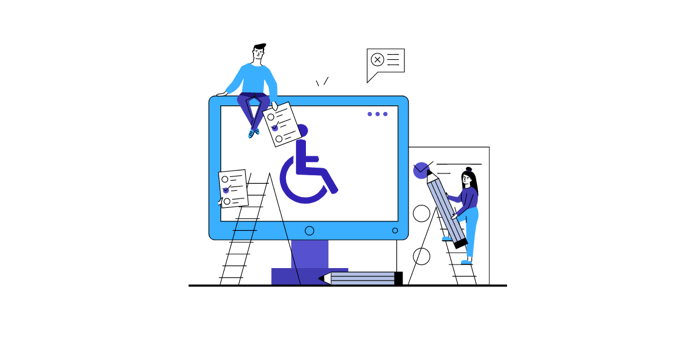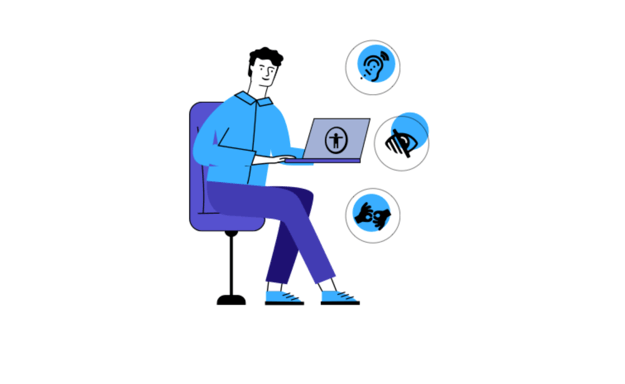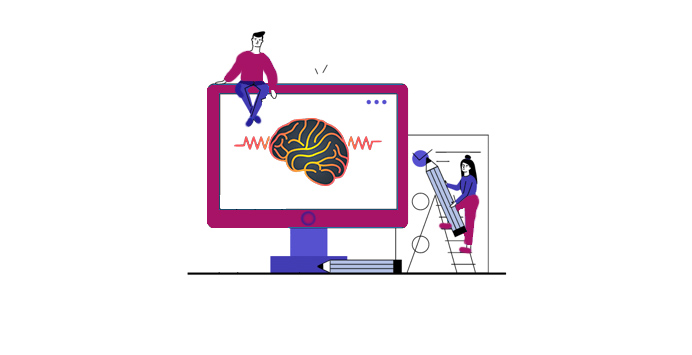
Website testing means the process of checking your website for potential bugs and errors before taking it online and live for the digital public. It helps in addressing issues like functionality, usability, compatibility, reliability, and security. One of the major reasons for testing a website is to abide by the laws of web accessibility. There are more than 4 billion users of the internet in the world. Everything has been summarized right in the palm of our hands. Data spread faster than bush fire now. To stand out and make sure there are no miseries left, website checkers exist. Before we start the complete website testing guide, we explain what web testing entails.
Web testing explained
The origin of testing came from the Chinese to select the best candidates for their government. In technology and the internet, testing became essential since IBM revolutionized the technology with its personal computers.
Several software and websites came in. PCs were introduced in the market with different specifications. These differences were a problem for the programs to run the same on all the devices. Errors were popping up, and they had to be addressed by testing and correcting method.
There is always a chance of human error when creating a program. Testing provides assurance that the work done is error-free and efficient.
Importance of website testing: a complete guide
The significance of website testing has increased like never, so we felt it was time for a complete guide. Web testing gives you insight, highlights, or offers to remove issues that can decrease website ranking and break its backlinking. Issues like long loading time, forms that do not submit, and broken links can frustrate the users.
More than half of Google searches (56%) happen on mobile devices. A well-tested website will adjust itself with distinct screen sizes and devices with different specifications. As a result, your website will achieve compatibility. This will also reduce the cost of redesigning the website every time it is updated. On top of all, testing websites will also ensure compliance with the web accessibility laws and requirements.
Challenges with website testing
Testing a website is not as easy as it seems. There are a lot of challenges that come up, especially at the development stage.
The first challenge is to make sure that the website is complying with the integration testing. This can be done by putting yourself in the shoes of the users. It is the overall checkup that the website is usable and functional in all aspects and does not collapse after merging new features.
Another challenge is to check the performance of your website. Whether large applications run smoothly on minimal hardware or not, try loading your site on low internet speed and bandwidth. The significance of testing this phase is of supreme importance.
Evaluating the security of your website is also an obstacle. Check your website for viruses and see if they redirect correctly for 3rd party websites. An example of such a website is 3rd party secure payment pages.
Other general problems that might occur while testing include:
- Not having a proper strategy set due to lack of knowledge.
- Not selecting the right testing tools which lead to wastage of time due to repetition.
- Being low on resources such as time and budget.
- Testing everything right but poor analysis of resulted errors. This challenge requires experienced persons to reach conclusions and correct the issues that came up as a result of testing.
Best Web Testing Strategy – a Complete Guide
So far, we have looked at how monumental the importance is to test a website before taking it live. Here is the complete guide on how testing your website can be done correctly with the following tests.
• Functionality testing
It is a process of testing that assesses the framework of a website. This includes checking if any of the links are broken. These links include outgoing links, incoming links, links that move on the same page, links leading to mail, etc.
This process also deals with testing forms, which covers checking if an error message is displayed when wrong input is made by the user. An example of incorrect input includes leaving out mandatory fields in forms.
Further, whether they are deleted or not after the cache is cleared or when the cookies are expired, testing cookies are also part of this testing process.
• Usability testing
Usability testing involves measuring the usability and interaction of users with the website to identify the weak points. This includes testing for navigation, i.e., what methods are available for users to surf around using different forms of input.
Another important area it tests is how the content is presented and whether it is accessible to every user or not? A hidden benefit of testing for usability is it covers most of the compliance requirements for web accessibility laws.
• Interface testing
Interface testing covers testing of an application server, database server, and web server. Interaction between these servers should be executed, and errors should be handled effectively.
• Compatibility testing
This test ensures that your website is compatible with all the devices and works accurately across different devices. Compatibility testing includes evaluating cross-browser and OS compatibility.
These checks can be performed by loading your website on several browsers and operating systems with different versions. This will give assurance on the error-free working of the website.
• Performance testing
The performance of a website can be tested by accessing through many devices at the same time. A good-tested website will run smoothly even with a huge number of users. Also, doing a load test on low internet speed and different connection types will evaluate its status.
• Security testing
Security is one of the most important areas to test when developing a website. There is a great possibility that the data is leaked from the website. This data includes customer bank card details, which could result in huge losses. Furthermore, getting affected by viruses is also a great risk for the websites.
Once you have gathered info, planned tests, and scenarios, it is time to execute the testing strategy by doing the tests mentioned above. After testing your website, analyze the result of these tests. Find the weaknesses and try to solve the loopholes. When you are done with everything, it is advised to test again for confirmation before launching it to the general public.
Ways of web testing
Websites can be tested in a number of ways. Some common ways of testing are:
• Random testing
Random testing means getting your website tested by random users who evaluate the usability defects of the website. This method saves cost as hiring experts for this job could be expensive.
• Expert testing
Experts test the website by going deep into different levels of penetration based on your budget and flexibility. This method might be costly but does a very extensive job to get the best results possible.
• Mobile testing
Some websites are specifically designed for mobile devices. They have special mobile-based widgets and stickers. In this method, testing the compatibility feature of your website is highly important.
Self-testing or outsourcing?
The answer to this question depends on how much value you want to add to your testing strategy. Outsource when the frequency of testing your websites is not very high. If you have to test only once or twice, outsourcing is the right option to do as it will be cost-effective.
Having an in-house department for testing would only be beneficial when an evaluation is recurring. It might raise some costs, but you will have a dedicated segment to ensure your services.
Website testing options
There are two website testing options. One is automated testing, and the other is manual testing. Automated testing is done through designing tests by writing programs and executing them at will. This saves time as it runs several different configurations at the same time. The problem with this testing is it can be repetitive when you update the website as the whole test program will run again.
Manual testing can be done by making your strategy to test the features of the websites. These include functionality tests, usability tests, security tests, interface tests, compatibility tests, and performance tests, which are discussed above.
The best option is to select a hybrid mode of testing which involves both methods. This can be done by running an automated test first, followed by manual testing to go deep into the areas that show errors. In some cases where automated testing fails, manual testing will be compulsory. By using both simultaneously, the website will be tested efficiently and will produce the desired outcome.
Our top reviewed website checkers
As part of this complete website testing guide, we also want to highlight the different checkers that are available. There are many website checkers available in the market that provide reasonable service in testing your websites. Some trusted, reputable checkers are:
axe is an advanced, fast and safe website tester. It helps website owners achieve compliance with web accessibility laws and regulations. A free google chrome extension is also available. However, it is not for beginners and requires some expertise to use it fully.
SiteImprove is an automated accessibility checker that provides full compliance with WCAG accessibility requirements. This tester is great for websites that have a lot of webpages. The downside of this checker is that the pricing of its services is not transparent. It also has a chatbox, but it is not as effective as a human representative would be.
Another great checker to comply with accessibility is the WAVE Accessibility checker. This tester is very user friendly and well presented. It provides free accessibility check but without the option to export the accessibility report. Also, there is no email or live chat option on this checker.
Just as the name says, this checker also helps in achieving compliance laws. The sheriff gives free accessibility guide and offers up-to-date accessibility compliance. It has a straightforward and very easy to use the portal. This checker’s drawback is that it is not as fast as its competitors, and this checker has published no standard fixed rates.
Conclusion
To summarize this complete website testing guide, there are many options available to test your website’s accessibility status. Depending on what kind of scan you want to make, there are different testing solutions available. For all kinds of websites governmental, consumer or legal. Nowadays it is interesting that about 47% of all purchases are done online. E-commerce has taken over half of the world’s shopping in its hands. Imagine losing your chunk of sales due to some bug or error in your website, making the user leave the page in frustration. It is necessary to check issues on your website and find solutions for these problems. Tested websites have a higher chance of getting top-ranked on search engines like Google and Bing. Users’ confidence will also rise in your business as users’ success in surfing your website will bring success to your dealings. Make sure to test sites before launching them into orbit. Collaborate with your developers and testers to find faults in the development process and immediately remove these bugs.










